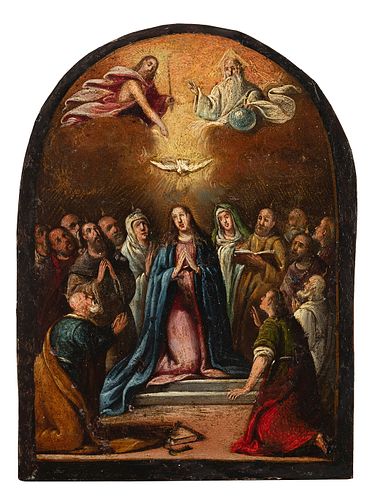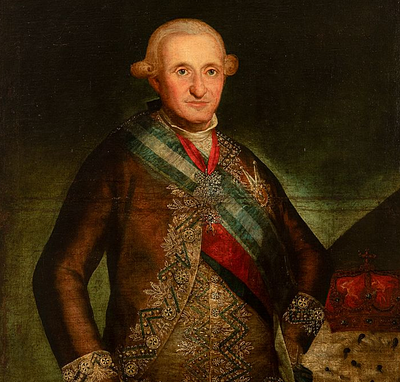Italian school; 17th century. "Pentecost". Oil on copper".
Lot 10
About Seller
Setdart Auction House
Carrer Aragó 346
Barcelona
Spain
Setdart Subastas was born in 2004 and is currently the first online art auction in Spain with solidity, prestige and reliability guaranteed by our more than 60,000 users. Setdart has a young, dynamic and enterprising team ready to successfully manage the purchase and sale of art works through custom...Read more
Estimate:
EUR€1,500 - EUR€2,000
$1,546.39 - $2,061.86
Absentee vs Live bid
Two ways to bid:
- Leave a max absentee bid and the platform will bid on your behalf up to your maximum bid during the live auction.
- Bid live during the auction and your bids will be submitted real-time to the auctioneer.
Bid Increments
| Price | Bid Increment |
|---|---|
| EUR€0 | EUR€10 |
| EUR€200 | EUR€25 |
| EUR€500 | EUR€50 |
| EUR€1,000 | EUR€100 |
| EUR€3,000 | EUR€200 |
| EUR€5,000 | EUR€500 |
| EUR€10,000 | EUR€1,000 |
| EUR€20,000 | EUR€2,000 |
| EUR€50,000 | EUR€5,000 |
About Auction
By Setdart Auction House
Sep 22, 2021
Set Reminder
2021-09-22 09:30:00
2021-09-22 09:30:00
America/New_York
Bidsquare
Bidsquare : 22nd September - ARAS JÁUREGUI Private Collection - Old Masters, 19th & 20th Century
https://www.bidsquare.com/auctions/setdart-auction-house/22nd-september---aras-j-uregui-private-collection---old-masters-19th-20th-century-7427
ARAS JÁUREGUI Private Collection - Old Masters, 19th & 20th Century Setdart Auction House sofia@setdart.com
ARAS JÁUREGUI Private Collection - Old Masters, 19th & 20th Century Setdart Auction House sofia@setdart.com
- Lot Description
Italian school; 17th century. "Pentecost". Oil on copper". It presents repainting and restorations. Measurements: 13 x 10 cm. In this copper we see the episode of the Pentecost, in which, as the Gospels narrate, Jesus, already disappeared from the Earth, does not leave his disciples orphans, but he sends them, from the Father, a consoler, the Paraclete or Spirit of the Truth, who will be with them eternally. Thus, although Christ appears fleetingly in the scene, he is the main protagonist of the episode. For her part, the Virgin, traditionally the central figure in this iconography, only has a secondary role in the glossolalia scene, as she is the only one who remains silent. Here we see the twelve apostles around Mary, above whose head the Holy Spirit appears in the form of a dove, illuminating them with golden rays of divine light, and above the Holy Spirit the busts of Jesus and God the Father. The scene is set in an interior worked in perspective, reflecting an awareness of the advances of the Italian Renaissance. This perspective construction is particularly reinforced by the steps in the floor and, given that the viewpoint allows us to see both the floor and the ceiling, which is somewhat distorted by the divine presentation of the trinity. This is a work that draws on the previous century, recovering values typical of classicism, such as the symmetrical arrangement of the apostles, six on each side. However, the influence of Italian naturalism can be seen in the virtual disappearance of the isocephaly, and especially in the individualisation of the different figures, particularly in their attitudes and positions. Likewise, the folds, although still chiaroscuro, show softer and more naturalistic lines, with a clear Italian influence.
- Shipping Info
-
In-house shipping available. Please inquire at admin@setdart.com.
-
- Buyer's Premium



 EUR
EUR CAD
CAD AUD
AUD GBP
GBP MXN
MXN HKD
HKD CNY
CNY MYR
MYR SEK
SEK SGD
SGD CHF
CHF THB
THB















